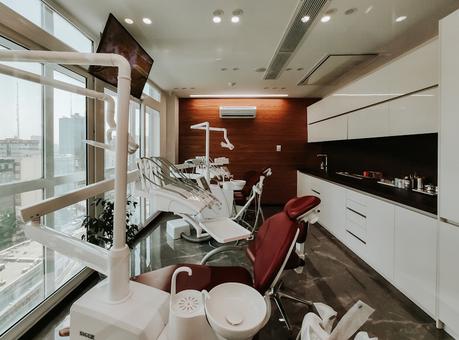When it comes to dental emergencies, it’s important to understand what qualifies as an actual emergency. A dental emergency is any situation that requires immediate attention from a dental professional to save a tooth, stop bleeding, or alleviate severe pain. This can include a variety of issues such as a knocked-out tooth, severe toothache, broken or cracked tooth, or an abscess. It’s important to note that any injury to the teeth or gums should be taken seriously and evaluated by a dentist as soon as possible. Ignoring a dental emergency can lead to further complications and more extensive treatment in the future.
In addition to physical trauma, dental emergencies can also include issues such as a lost filling or crown, which can expose the sensitive inner layers of the tooth to bacteria and debris. Any situation that causes severe pain, swelling, or bleeding should be considered a dental emergency and should be addressed promptly by a dental professional. It’s important to be proactive and seek immediate care to prevent further damage and alleviate discomfort.
Key Takeaways
- Severe toothache, broken or knocked-out teeth, and excessive bleeding qualify as dental emergencies
- Common types of dental emergencies include toothaches, broken teeth, knocked-out teeth, and objects stuck between teeth
- Steps to take in a dental emergency include rinsing the mouth with warm water, applying a cold compress, and contacting a dentist immediately
- Different types of dental emergencies require different handling, such as saving a knocked-out tooth in milk or saliva and avoiding touching the root of a broken tooth
- Preventative measures for dental emergencies include wearing a mouthguard during sports, avoiding chewing hard objects, and maintaining good oral hygiene
- Seek professional help for a dental emergency if the pain is severe, bleeding is excessive, or a tooth is knocked out
- Understanding dental emergencies is important for timely and appropriate treatment, which can prevent further damage and complications
Common Types of Dental Emergencies
There are several common types of dental emergencies that individuals may encounter. One of the most common is a knocked-out tooth, which can occur due to physical trauma or injury to the mouth. In this situation, it’s crucial to seek immediate dental care as there is a possibility of saving the tooth if it is re-implanted within a short period of time. Another common dental emergency is a severe toothache, which can be caused by various factors such as an abscess, infection, or decay. Severe pain in the mouth should never be ignored and should be evaluated by a dental professional as soon as possible.
Broken or cracked teeth are also common dental emergencies that require immediate attention. This can occur due to physical trauma, biting down on a hard object, or untreated decay. In addition, a lost filling or crown can expose the inner layers of the tooth to bacteria and debris, leading to further complications if not addressed promptly. Other common dental emergencies include soft tissue injuries such as cuts, tears, or puncture wounds to the lips, cheeks, or gums. These injuries can result from accidents, falls, or biting down on hard objects. It’s important to seek immediate care for any type of dental emergency to prevent further damage and alleviate discomfort.
Steps to Take in a Dental Emergency
In the event of a dental emergency, it’s important to take immediate action to address the situation and alleviate discomfort. The first step is to assess the severity of the situation and determine if it requires immediate attention from a dental professional. If there is severe pain, bleeding, or physical trauma to the teeth or gums, it’s crucial to seek emergency dental care as soon as possible. In the case of a knocked-out tooth, it’s important to handle the tooth carefully by the crown (top part) and avoid touching the root. The tooth should be rinsed with water if dirty, but it’s important not to scrub or remove any attached tissue fragments.
For a broken or cracked tooth, it’s important to rinse the mouth with warm water and apply a cold compress to reduce swelling. If there is bleeding from the mouth, it’s important to apply gentle pressure with a clean gauze or cloth to stop the bleeding. In the case of a lost filling or crown, it’s important to keep the area clean and avoid chewing on that side of the mouth until it can be repaired by a dental professional. It’s crucial to contact a dentist immediately in the event of a dental emergency and follow their instructions for further care.
How to Handle Different Types of Dental Emergencies
Different types of dental emergencies require specific actions to address the situation and alleviate discomfort. In the case of a knocked-out tooth, it’s important to handle the tooth carefully by the crown and avoid touching the root. The tooth should be rinsed with water if dirty, but it’s important not to scrub or remove any attached tissue fragments. If possible, the tooth should be re-implanted into the socket and held in place until emergency dental care can be sought. If re-implantation is not possible, the tooth should be kept moist by placing it in milk or saliva until it can be evaluated by a dental professional.
For a broken or cracked tooth, it’s important to rinse the mouth with warm water and apply a cold compress to reduce swelling. It’s crucial to avoid chewing on that side of the mouth and seek immediate dental care to prevent further damage and alleviate discomfort. In the case of a lost filling or crown, it’s important to keep the area clean and avoid chewing on that side of the mouth until it can be repaired by a dental professional. It’s crucial to contact a dentist immediately in the event of a dental emergency and follow their instructions for further care.
Preventative Measures for Dental Emergencies
While dental emergencies can occur unexpectedly, there are preventative measures that individuals can take to reduce their risk of experiencing a dental emergency. One of the most important preventative measures is maintaining good oral hygiene by brushing and flossing regularly and visiting a dentist for routine check-ups and cleanings. This can help identify any potential issues early on and prevent them from developing into more serious problems.
In addition, wearing a mouthguard during sports activities can help protect the teeth from injury and reduce the risk of a knocked-out tooth or other physical trauma to the mouth. Avoiding chewing on hard objects such as ice, popcorn kernels, or hard candies can also help prevent broken or cracked teeth. It’s important to be mindful of what is being put into the mouth and avoid habits that can increase the risk of dental emergencies.
When to Seek Professional Help for a Dental Emergency

It’s important to seek professional help for a dental emergency as soon as possible to address the situation and prevent further complications. If there is severe pain, bleeding, or physical trauma to the teeth or gums, it’s crucial to seek emergency dental care immediately. In the case of a knocked-out tooth, time is of the essence and seeking immediate care can increase the chances of saving the tooth.
For broken or cracked teeth, lost fillings or crowns, or soft tissue injuries, it’s important to contact a dentist as soon as possible for further evaluation and treatment. Ignoring a dental emergency can lead to further complications and more extensive treatment in the future. It’s important to be proactive and seek immediate care from a dental professional to prevent further damage and alleviate discomfort.
Importance of Understanding Dental Emergencies
In conclusion, understanding what qualifies as a dental emergency and knowing how to handle different types of emergencies is crucial for maintaining good oral health and preventing further complications. Dental emergencies can occur unexpectedly and require immediate attention from a dental professional to address the situation and alleviate discomfort. By taking preventative measures such as maintaining good oral hygiene and wearing protective gear during sports activities, individuals can reduce their risk of experiencing a dental emergency.
It’s important to seek professional help as soon as possible in the event of a dental emergency to prevent further damage and ensure proper treatment. Ignoring a dental emergency can lead to more extensive treatment in the future and compromise oral health. By being proactive and seeking immediate care from a dental professional, individuals can increase their chances of saving a tooth, stopping bleeding, and alleviating severe pain. Understanding dental emergencies is essential for maintaining good oral health and addressing any issues that may arise in a timely manner.
If you’re interested in learning more about oral health care and hygiene, be sure to check out the article “Oral Health Care and Hygiene” on Copper Hills Family Dentistry’s website. This comprehensive guide provides valuable information on maintaining good oral hygiene and preventing dental emergencies. With tips on proper brushing and flossing techniques, as well as advice on choosing the right dental products, this article is a must-read for anyone looking to improve their oral health. Source

